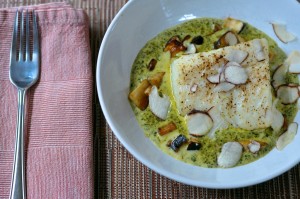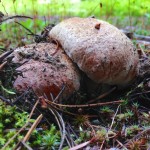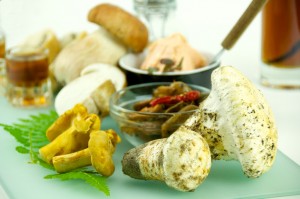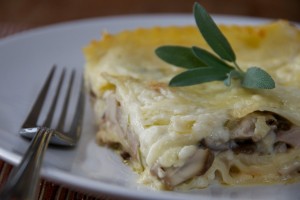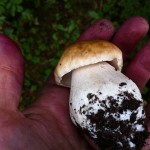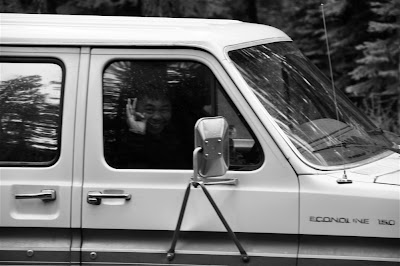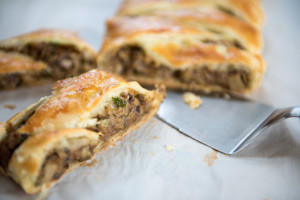 THIS WAS MY FIRST strudel. For this reason I kept things simple and bought frozen puff pastry from the store. You’re welcome to make your own.
THIS WAS MY FIRST strudel. For this reason I kept things simple and bought frozen puff pastry from the store. You’re welcome to make your own.
A couple notes: braiding the puff pastry makes for an attractive presentation and allows air to escape through the vents so that the strudel doesn’t blow up into a monstrosity. The filling includes a medley of wild mushrooms. Dried porcini, though not mandatory, gives the strudel a deep mushroomy flavor.
3 cups diced wild mushrooms
1 oz dried porcini (optional)
1 large shallot, diced
2 tbsp butter
olive oil
2 – 3 springs fresh thyme, de-stemmed
1/4 cup white wine
1 handful parsley, chopped
salt and pepper
1 sheet puff pastry
1 egg, beaten
1. If using dried porcini, pulverize in a food processor and rehydrate with 1 cup warm water. Set aside for 20 minutes.
2. Saute diced shallot in butter over medium heat until soft. Add diced mushrooms. Cook mushrooms and shallot together for several minutes. The mushrooms will soak up all the butter; add olive oil if necessary. When mushrooms begin to brown, deglaze pan with a splash of wine. Add mushroom stock and reduce until the mixture is moist but not wet. Stir in thyme and parsley. Season with salt and pepper to taste. Remove from heat.
3. Pre-heat oven to 350 degrees. Roll out puff pastry into a rectangle about 12 inches by 8 inches. Place pastry on a piece of baking parchment atop a cookie sheet. With a knife, make diagonal cuts to the edges of the two long sides, so that the pastry can be folded up in a braided pattern. Spoon mushroom mixture down the middle. Fold up the strudel and pinch the ends. Brush with eggwash and place in oven. Bake until golden, about 30 minutes.



